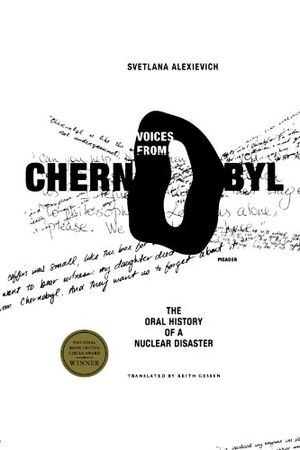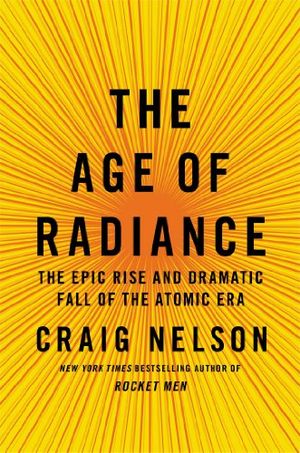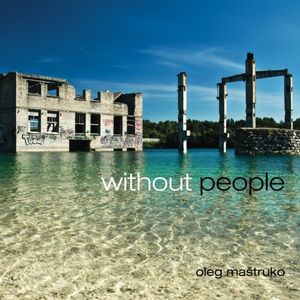Haunting Drone Footage of Chernobyl Town
“Postcards from Pripyat, Chernobyl” shows a drone’s-eye view of the city nearly three decades after nuclear disaster
Thirty-five years ago, Pripyat—a Ukranian city near the country's northern border with Belarus—was a thriving town of 50,000 residents built in the shadow of the Chernobyl Power Plant, where many of the town's residents worked. Then, in 1986, the plant suffered a catastrophic power increase in one of its reactors, causing an explosion at its core that released an estimated 3 billion curies of radioactive particles into the air—over seven times the amount purportedly released into the atmosphere in the week following the 2011 Fukushima disaster. The explosion constituted the worst nuclear disaster in history, and within days, Pripyat—the closest town to the reactor—went from a bustling nuclear hamlet to a near-ghost town.
In early 2014 Danny Cooke, a British freelance filmmaker, visited Chernobyl to film the location for a 60 Minutes piece, "Chernobyl: The Catastrophe That Never Ended." While on location, Cooke used a drone and camera to capture aerial footage of Pripyat, seemingly suspended in time for the last three decades. He compiled the footage—along with the eerie background song "Promise Land," by Hannah Miller—into a three-minute short feature titled "Postcards from Pripyat, Chernobyl," the first film to provide a drone's-eye perspective of the abandoned town. The result depicts a haunting juxtaposition of an area shocked by catastrophe, with trees and nature beginning to reclaim empty structures.
"Chernobyl is one of the most interesting and dangerous places I've been. The nuclear disaster, which happened in 1986 (the year after I was born), had an effect on so many people, including my family when we lived in Italy ..." Cooke wrote of the experience. "It caused so much distress hundreds of miles away, so I can't imagine how terrifying it would have been for the hundreds of thousands of Ukrainian citizens who were forced to evacuate."
He continued:
During my stay, I met so many amazing people, one of whom was my guide Yevgen, also known as a "Stalker." We spent the week together exploring Chernobyl and the nearby abandoned city of Pripyat. There was something serene, yet highly disturbing about this place. Time has stood still and there are memories of past happenings floating around us.
The disaster claimed the lives of 31 workers and emergency responders, and sparked international debate about the long-term potential health impacts of the catastrophe (the exact number of deaths caused by the fallout might never be known). Nuclear experts estimate that it will take 20,000 years for the area to be safe for humans to live in once again. Still, potential health dangers haven't dissuaded tourists from exploring the site of the world's worst nuclear disaster, which was declared a tourist attraction in 2011. A headline in the Atlantic from the same year touted Chernobyl as a "tourist hotspot," noting that visits to the area had been increasing to nearly 10,000 visitors a year. The tours were briefly suspended after reports suggested that the tourism revenue—around £100 per visitor—was ending up in mysterious hands and being spent in opaque ways. When the tours began anew, ticket sales were higher than ever—and new tours allowed an unprecedented level of access, taking visitors as far as areas around the reactors themselves. A 2014 article in National Geographic revisited the idea of nuclear tourism: In the wake of nuclear disaster and abandonment, Chernobyl seems to be finding new life as a destination for thrill-seeking tourists.
But a September 2014 post from The Bohemian Blog paints a more complicated picture of Chernobyl's ascent to the top of tourism must-see lists—one that shows the city not as an abandoned, post-apocalyptic ghost town, but a crowded, trampled tourist trap:
By the time I’d sorted all my photographs from the Zone, I had a powerful collection of images which seemed to show an untrodden wasteland littered with the debris of lives long-since departed. But that’s not the full picture. The truth is, for every image I kept there were at least another nine I had to trash… obscured as they were by the arms, cameras, heads and tripods of the 30-or-so other people clustering around me to get the same shot.
Unless you book a private tour, making Pripyat look like a ghost town can often be hard work.
Some tourists, the author notes, even pick up artifacts and move them around to create better shots. "I watched a photographer arrange stuffed bears and little dolls so that they sat in line along the edge of a bare, metal-framed bed. I'm sure it made for an excellent photograph… but if my group was by any way representative, then just imagine the cumulative effect of as many as 10,000 visitors interacting with the Zone every year."
Cooke's drone-eye film certainly captures a particular image of Pripyat and the surrounding area—if that's the image you'd like to associate with Chernobyl, it might be best to stay at home with your Geiger counter and camera.
Related Books

Voices from Chernobyl: The Oral History of a Nuclear Disaster

The Age of Radiance: The Epic Rise and Dramatic Fall of the Atomic Era

Without People
/https://tf-cmsv2-smithsonianmag-media.s3.amazonaws.com/accounts/headshot/natasha-geiling-240.jpg)
/https://tf-cmsv2-smithsonianmag-media.s3.amazonaws.com/accounts/headshot/natasha-geiling-240.jpg)